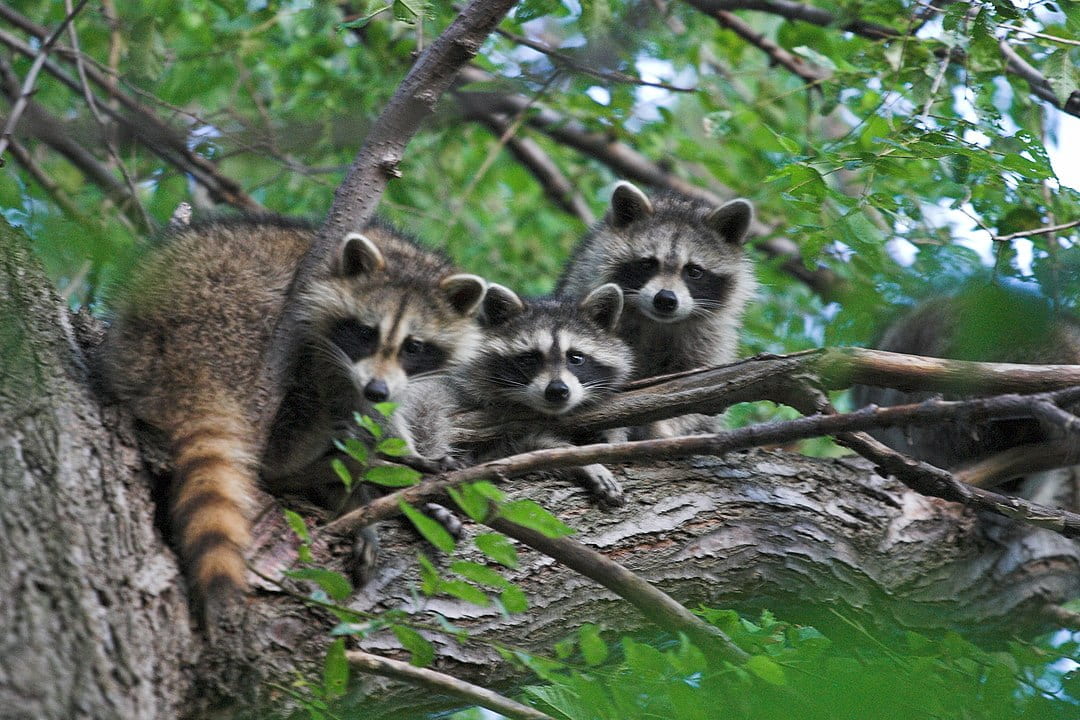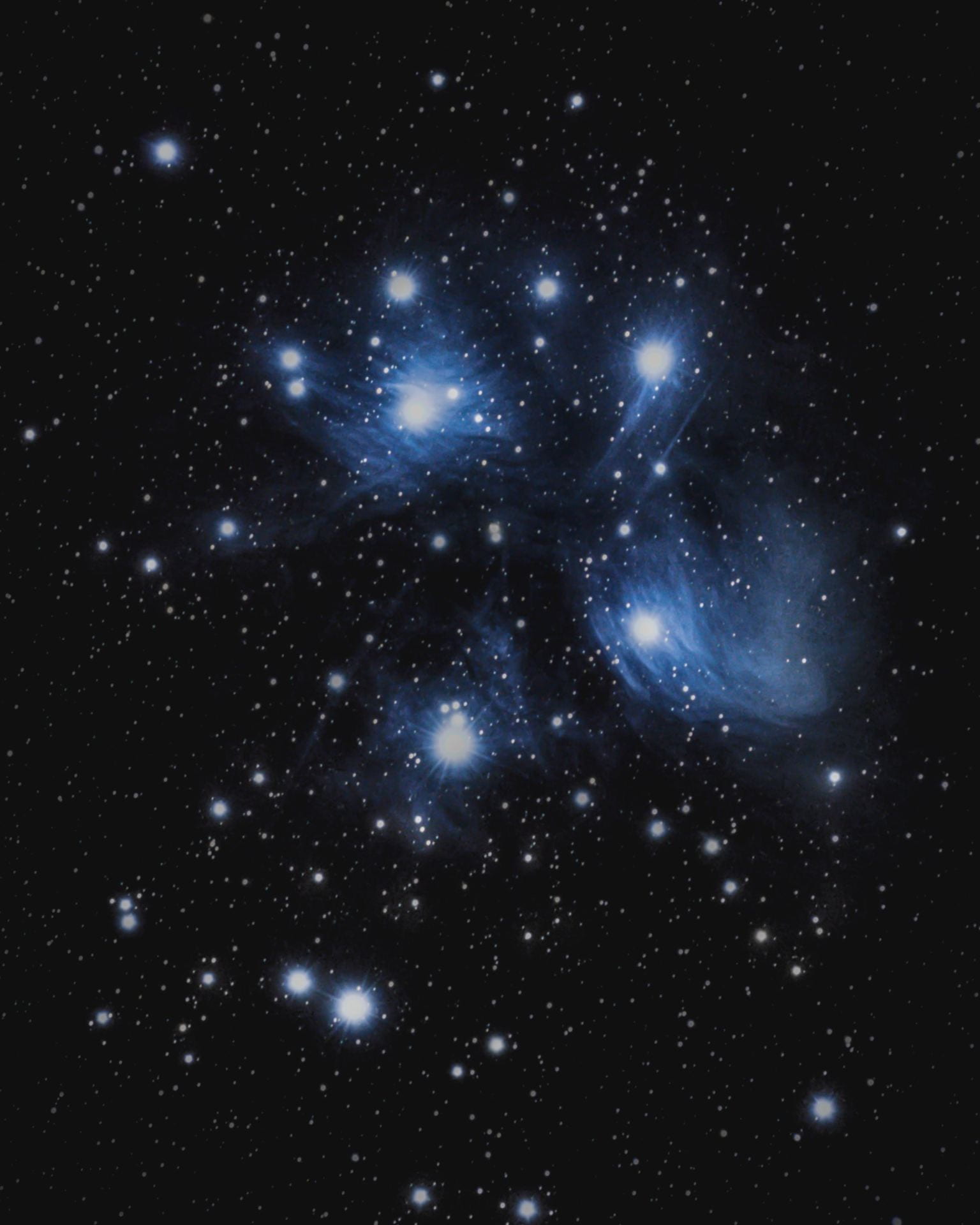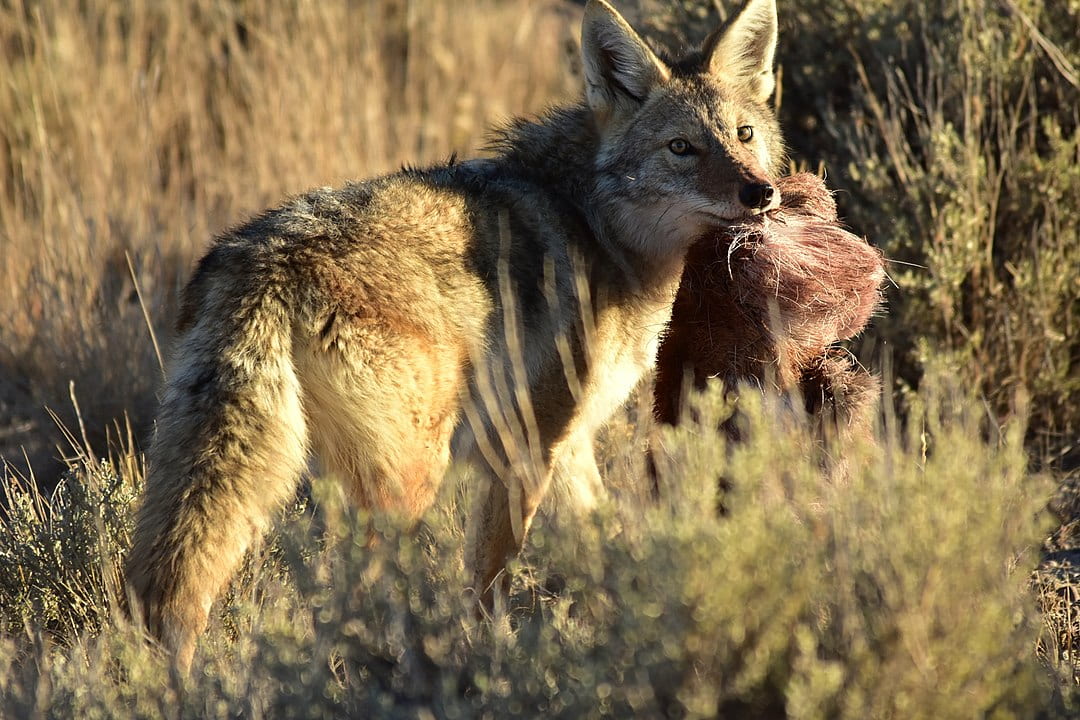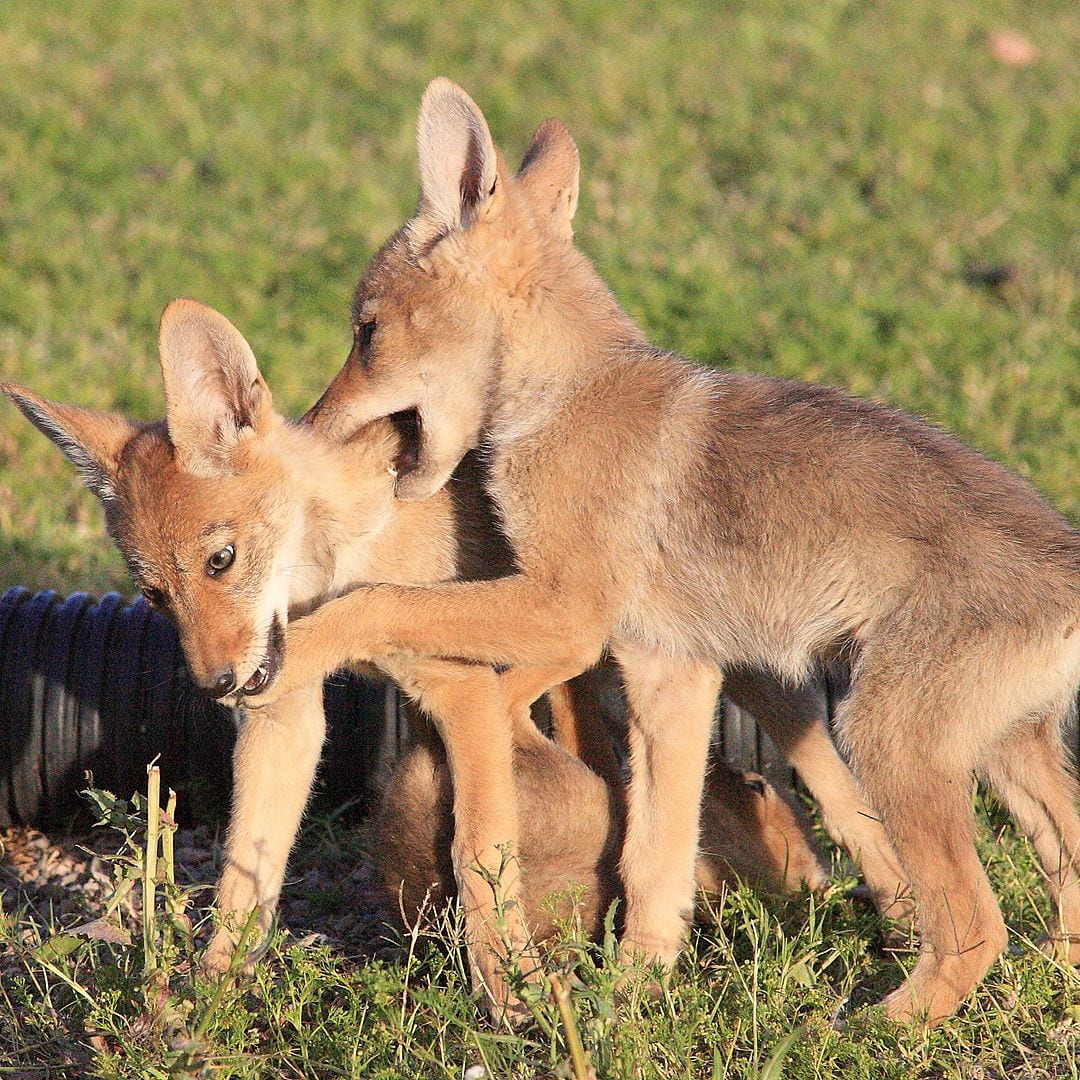“Coyote and Raccoon”
Culture: Kahosadi (Shasta) | Narrator: Unidentified | Source: Dixon (1910:35)
Entry by Michelle Scalise Sugiyama
Story
Coyote was going somewhere with some one. He was going to a dance with Coon. They returned to their houses. On the way a squirrel ran into a hole on the road. “You scare him out the other side,” said Coyote. “All right!” said the other. So he scared him, put his hand into the other opening of the hole. Coyote at his end put his hand in, and seized something. “Look out! You have hold of me,” said the Coon. “No!” said Coyote, “that is the squirrel.” — “No! That is me,” said Coon. “I tell you that it is me,” said he. “No!” said Coyote, “that is the squirrel.” So he kept on pulling: he pulled off Coon’s arm, and killed him.
Then Coyote went on to his house. When he arrived, his children went after what he had killed, to bring it home. They brought it all into the house, and began to eat it. The youngest child was left out, and he grew angry. So he went across to the other house, to the Coon’s children, and told them, “Coyote has killed your father.” After this Coyote went off somewhere. When he was gone, Coon’s children came across, and killed all Coyote’s children but one. Then they went back to their own house, got ready, and ran away. They carried off the one child with them, and went up above.
Coyote came back, and saw that there were no children there. All were dead. “I don’t know where they are,” he said. He ran into the house, ran into the other house, but there were none there. He hunted everywhere, he asked all things. Now the dust began to rise in eddies. He looked up, and saw them rising there. He ran after them, but could not catch them. These stars there (Pleiades) are Coon’s children. Coyote’s child is the smallest one. (In winter, when coons are in their holes, the Pleiades are the most brilliant, and continually visible. In summer, when coons are out and about, the Pleiades are not seen.)
Traditional Ecological Knowledge
Zoology
This story provides information about ground squirrel habitat and behavior. This is seen when the squirrel runs into a hole to evade Coyote and Coon. This, in turn, implies that both coyotes and raccoons eat squirrels. The fact that they are traveling together suggests that their habitat and diet are similar. The fact that Coyote’s children eat Coon’s carcass further suggests that coyotes eat raccoons. The story also describes coyote feeding behavior, noting that the pups bring the raccoon carcass back to the den before eating it. This also suggests that male coyotes help with the provisioning of offspring. The story also indicates that coyote pups are left in the den when the adults go hunting, and that this makes them vulnerable to predation. This is illustrated when all of Coyote’s children but one are killed when he is “off somewhere.” The story suggests that coyotes and raccoons are nocturnal or crepuscular. This is indicated by the fact that they are on their way home from a dance when they encounter the squirrel. Since dances tend to occur in the evening and can last all night, the implication is that Coyote and Coon are headed home near dawn. The reference to raccoons holing up in winter suggests that they are a denning animal that hibernates. The transformation of the raccoon children into the Pleiades, which consists of seven stars, provides information about raccoon litter size. Minus the coyote child who is transformed along with the raccoon children, their transformation implies a litter size of six.
Astronomy
This story provides descriptive information useful for identifying the Pleiades. The transformation of all of Coon’s children plus one of Coyote’s children into this constellation implies that it consists of several stars. The observation that it is “most brilliant” in winter suggests that it is one of the brighter constellations. The story further notes that these stars are continually visible at this time, implying that they can be seen in the sky from sunset till dawn. This information, along with the observation that the Pleiades are not visible in the summertime, identifies ecological cues that can be used to predict the change of seasons: when the Pleiades disappear, summer is on the way; when they reappear, winter is coming. This information, in turn, can be used to predict the availability of raccoons: in the summer they are out and about, but in the wintertime they are often hidden away in their dens.
Technology
Although in real life coyotes and raccoons do not hunt together, this story describes a cooperative hunting technique that can be used by humans. In noting that the squirrel’s hole has “another opening,” the story calls attention to the fact that many animal burrows have at least two access points. As the story implies, this provides the animal inside with a means of escape. The story thus warns that, when hunting burrowing animals, it is important to locate and block all the exits. It also shows that this escape strategy can be turned to the hunter’s advantage: a hunter posted at one exit frightens the animal, while a hunter posted at another exit stands ready to grab the animal as it attempts to flee.
The Land and The People
Mount Shasta | Photo by christoph.pippan
The traditional lands of the Shasta people span Siskiyou, Jackson, and Klamath counties in what are now northern California and southern Oregon. They included the Klamath mountains and parts of the Klamath, Salmon, and Sacramento River drainages. Most of this rugged, mountainous region lies above 800 meters. Summers are hot and winters are fairly cold, with heavy snowfall at higher elevations.
The origin and meaning of the ethnonym “Shasta” is unclear. It was not used by the Shasta people themselves, nor was it used by their neighbors the Achomā’wi and Atsugē’wi. According to Shasta informants, it is not a place-name for any part of their territory—not even Mount Shasta, which they called Wai’īka (from which the town of Yreka takes its name). The three main areas of Shasta settlement in California were the Klamath River valley, Scott Valley, and Shasta Valley. The Klamath River people were known as the Kamma’twa or Wirūhikwai’iruk!a, the Scott Valley people as Kī’katsik or Irūai’tsu, and the Shasta Valley people as Irūai’tsu. The Oregon Shasta were known as Kahō’sadi.
Salmon River | Photo by Scott Harding
Belding’s ground squirrel | Photo by Phil Myers
The rivers in Shasta territory abounded in salmon and other aquatic resources, and the mountains and valleys teemed with game animals such as deer, elk, antelope, and bear. Small game such as rabbits and squirrels were also important in the diet. Mountain lions and bobcats were eaten, but coyotes were not. The squirrel species referenced in the story is probably Belding’s ground squirrel (Spermophilus beldingi), which is found in the mountains of the western United States, including northeastern California. This diurnal species forages by day and takes refuge underground at night. It utilizes two types of burrows: complex tunnels with multiple entrances, and a shorter type with only one entrance. It is vulnerable to predation by weasels, raptors, snakes, badgers, and coyotes.
Coyotes (Canis latrans) are found throughout North and Central America. A highly adaptable species, they use a wide range of habitats, including mountain, forest, grassland, and riparian zones. Although primarily nocturnal and crepuscular, they are sometimes seen in the daytime. Like the coyote in the story, they tend to travel along fixed routes or trails when hunting. Although their diet consists largely of small mammals such as ground squirrels, they are known to eat birds, snakes, invertebrates, carrion, and vegetation. The young are fed and protected by both parents, and are kept in or near the den to reduce the risk of predation by wolves and mountain lions. Interestingly, coyotes are known to hunt “cooperatively” with badgers. Badgers are well-adapted to digging animals out of burrows, while coyotes are well-adapted to running down game. Between the two of them, a rodent has little chance of escape.
The cooperative efforts of Coyote and Coon may reference a similar relationship between coyotes and raccoons, or it may simply reference their similarities in habitat, diet, and behavior. Like coyotes, Northern raccoons (Procyon lotor) are nocturnal, opportunistic, highly adaptable animals found across North and Central America. They occupy a range of habitats, including tropical and temperate forests, grasslands, and riparian areas. In addition to nuts and fruits, their diet includes small animals such as crayfish, insects, frogs, fish, and rodents. Although they do not hibernate, during cold, snowy spells they are known to sleep for long periods at a time. They prefer to den in trees, but may use woodchuck burrows or even caves. Litter size ranges from three to seven; males do not help with the rearing of offspring. Adults and juveniles are vulnerable to predation by hawks, owls, wolves, and coyotes.
Little is known about Shasta ethnoastronomy; however, the Pleiades were widely used by hunting-and-gathering peoples to predict seasonal change and resource availability (see “Legend of the Seven Stars” and “The Wareenggary and Karambal”). Additionally, the Shasta believed that “If children do not learn the stories that are repeated to them, they will grow up hump-backed” (Dixon 1907:471), suggesting that stories like “Coyote and Raccoon” had educational value in Shasta culture. Dancing, too, was important in Shasta life. During the girl’s puberty ceremony, for example, several different dances were performed throughout the night, and the “round dance” typically continued till dawn.
Map
The traditional lands of the Shasta people span Siskiyou, Jackson, and Klamath counties in what are now northern California and southern Oregon.
References
Dixon, R. (1907). The Shasta. Bulletin of the American Museum of Natural History, 17, 363-498.
Dixon, R. (1910). Shasta myths. Journal of American Folklore, 23(87), 8-37.
Duvall, L. (1999). “Spermophilus beldingi” (On-line), Animal Diversity Web. Accessed January 26, 2021 at https://animaldiversity.org/accounts/Spermophilus_beldingi/
Fox, R. (2001). “Procyon lotor” (On-line), Animal Diversity Web. Accessed January 26, 2021 at https://animaldiversity.org/accounts/Procyon_lotor/
Tokar, E. (2001). “Canis latrans” (On-line), Animal Diversity Web. Accessed January 26, 2021 at https://animaldiversity.org/accounts/Canis_latrans/















